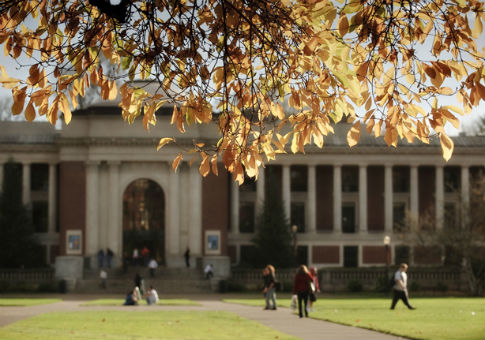Last week, Wisconsin Senator Ron Johnson lashed out at what he called the "higher education cartel" of tenured professors for blocking reforms that could reduce ballooning tuition and fees: "We’ve got the Internet—you have so much information available. Why do you have to keep paying different lecturers to teach the same course? You get one solid lecturer and put it up online and have everybody available to that knowledge for a whole lot cheaper? But that doesn’t play very well to tenured professors in the higher education cartel. So again, we need disruptive technology for our higher education system." Johnson went on to suggest that students could learn as much and more efficiently by watching Ken Burns’s documentary The Civil War than by taking a history class.
It’s a common complaint among conservatives that many tenured professors "radicalize" students with Marx and gender theory while living royally off of state funding and federal student loans. Online and competency-based education will fix both, according to critics like Johnson and Scott Walker, by limiting professors’ unchecked power and improving efficiency with market-based solutions.
There’s just one problem, according to Peter Augustine Lawler, the Dana Professor of Government at Berry College and a regular contributor to National Review, Modern Age, and many other conservative publications: It won’t work.
It may be true, Lawler argues in his latest collection of essays, American Heresies and Higher Education, that some professors at American universities use their positions for ideological activism, do very little work, and inflate grades to earn positive course evaluations from students. Still, it’s unlikely that they are single-handedly responsible for the dumbing-down of undergraduate education, nor are they responsible for skyrocketing tuition.
The real culprits are the twin evils of federal student loans and accreditation. The availability of a seemingly endless supply of federal cash for students who, until recently, were willing to drop $50,000 to $100,000 for a credential that is still required for most well-paying jobs, has led to an "amenities race" for students, according to Lawler. Dorms are now like hotels. Concierge services are provided to students via "student affairs" offices to maximize "health, safety, and choice" on campus. On-site "amateur" sports entertain students on the weekends and supposedly build community.
The string attached to this federal cash is accreditation. In order to receive federal funding or accept students with federal loans, colleges must be accredited by a recognized regional body. These bodies are not federal agencies. They are independent and managed by other professors and university administrators. Still, the bureaucratic demands increase every year. Almost everything learned in every course must now be stated and demonstrated with "learning outcomes." Schools must show "continual improvement," develop "quality enhancement programs," constantly measure "institutional effectiveness," and so forth. It used to be that a school was evaluated every 10 years. Now it is more or less ongoing.
The number of administrative staff it takes to provide the lifestyle students expect and oversee the increasing amount of paperwork for accreditation is huge. Lawler doesn’t provide any figures, but they are relatively well-known. To give just one example: The number of full-time faculty in the California State University system increased slightly between 1975 and 2008, from 11,614 to 12,019, while the number of administrators nearly quadrupled during the same period, from 3,800 to 12,183.
In short, American colleges are suffering from administrative bloat, which increases every year at the hand of career managers who value standardization and procedures above all else, and who already put a great deal of trust in technology and market solutions. If the relative reduction in the number of full-time faculty per students over the past 30 years did not lead to a more efficient and affordable college education, it’s unclear how further reducing it could. Furthermore, it is unclear how increasing the use of technology—online education—already embraced at most schools will change anything.
Lawler isn’t against technology, nor is he against market solutions. What we need, he argues, are market solutions to fix the actual problems. His solution to the crisis in American higher education is to greatly reduce the amount of work required for accreditation, which would partially reduce the need for an army of administrators. Instead of a multi-year process, make accreditation a spot-check, where a small team of peers arrives unannounced on a college campus to check the books, faculty credentials, visit a few classes, and look over course syllabi. Whether or not this would be enough is unclear, and it seems that changing how much funding is available to students would have to be addressed as well, but it would be a step in the right direction. It might even curtail the pandering to students we see at a number of colleges—the provision of "safe spaces" and renaming of buildings—to the extent that it’s mostly college administrators who view students as "consumers" and espouse the view that "the consumer is always right."
American Heresies and Higher Education is about more than fixing the practical problems facing colleges today—much more, in fact. Lawler tackles the role of religion in American democracy and education, the danger of libertarian secularization, the value of the humanities, and the delusions of transhumanism, among other things. He rightly takes the Socratic Method down a notch in one essay and esotericism in another ("I don’t think we should practice esoteric writing, and I don’t even think it ever faithfully or unambiguously served the truth.")
Wise, funny, and clear-sighted, American Heresies and Higher Education is a book for anyone who wants to know what’s really wrong with American higher education and what might be done about it.
